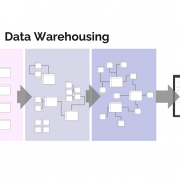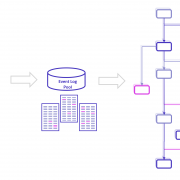Operational Data Store vs. Data Warehouse
One of the main problems with large amounts of data, especially in this age of data-driven tools and near-instant results, is how to store the data. With proper storage also comes the challenge of keeping the data updated, and this is the reason why organizations focus on solutions that will help make data processing faster and more efficient. For many, a digital transformation is in their roadmap, thanks in large part to the changes brought about by the global COVID-19 pandemic. The problem is that organizations often assume that it’s similar to traditional change initiatives, which can’t be any further from the truth. There are a number of challenges to prepare for in digital transformations, however, and without proper planning, non-unified data storage systems and systems of record implemented through the years can slow down or even hinder the process.
Businesses have relied on two main solutions for data storage for many years: traditional data warehouses and operational data stores (ODS). These key data structures provide assistance when it comes to boosting business intelligence so that the business can make sound corporate decisions based on data. Before considering which one will work for your business, it’s important to understand the main differences between the two.
What is a Data Warehouse?
Data warehousing is a common practice because a data warehouse is designed to support business intelligence tools and activities. It’s subject-oriented so data is centered on customers, products, sales, or other subjects that contribute to the business bottom line. Because data comes from a multitude of sources, a data warehouse is also designed to consolidate large amounts of data in a variety of formats, including flat files, legacy database management systems, and relational database management systems. It’s considered an organization’s single source of truth because it houses historical records built through time, which could become invaluable as a source of actionable insights.
One of the main disadvantages of a data warehouse is its non-volatile nature. Non-volatile data is read-only and, therefore, not frequently updated or deleted over time. This leads to some time variance, which means that a data warehouse only stores a time series of periodic data snapshots that show the state of data during specific periods. As such, data loading and data retrieval are the most vital operations for a data warehouse.
What is an Operational Data Store?
Forward-thinking companies turn to an operational data store to resolve the issues with data warehousing, primarily, the issue of always keeping data up-to-date. Similar to a data warehouse, an ODS can aggregate data from multiple sources and report across multiple systems of record to provide a more comprehensive view of the data. It’s essentially a staging area that can receive operational data from transactional sources and can be queried directly. This allows data analytics tools to query ODS data as it’s received from the respective source systems. This offloads the burden from the transactional systems by only providing access to current data that’s queried in an integrated manner. This makes an ODS the ideal solution for those looking for near-real time data that’s processed quickly and efficiently.
Traditional ODS solutions, however, typically suffer from high latency because they are based on either relational databases or disk-based NoSQL databases. These systems simply can’t handle large amounts of data and provide high performance at the same time, which is a common requirement of most modern applications. The limited scalability of traditional systems also leads to performance issues when multiple users access the data store all at the same time. As such, traditional ODS solutions are incapable of providing real-time API services for accessing systems of record.
A Paradigm Shift
As modern real-time digital applications replace previously offline services, companies are going through a paradigm shift and venturing beyond what traditional data storage systems can offer. This has led to the rise of a new breed of ODS solutions that Gartner refers to as digital integration hubs. It’s a cost-effective solution because it doesn’t require a rip-and-replace if you already have a traditional ODS in place. Adopting a digital integration hub can be as simple as augmenting your current system with the missing layers, including the microservices API, smart cache, and event-driven architecture.
While sticking with a data warehouse or traditional ODS may not necessarily hurt your business, the benefits of modernization via a digital integration hub are too great to ignore. Significant improvements in throughput, availability, and scalability will help organizations become more agile so they can drive innovation quicker, helping their industry and pushing the limits of technology further to open up possibilities never before discovered.








Leave a Reply
Want to join the discussion?Feel free to contribute!